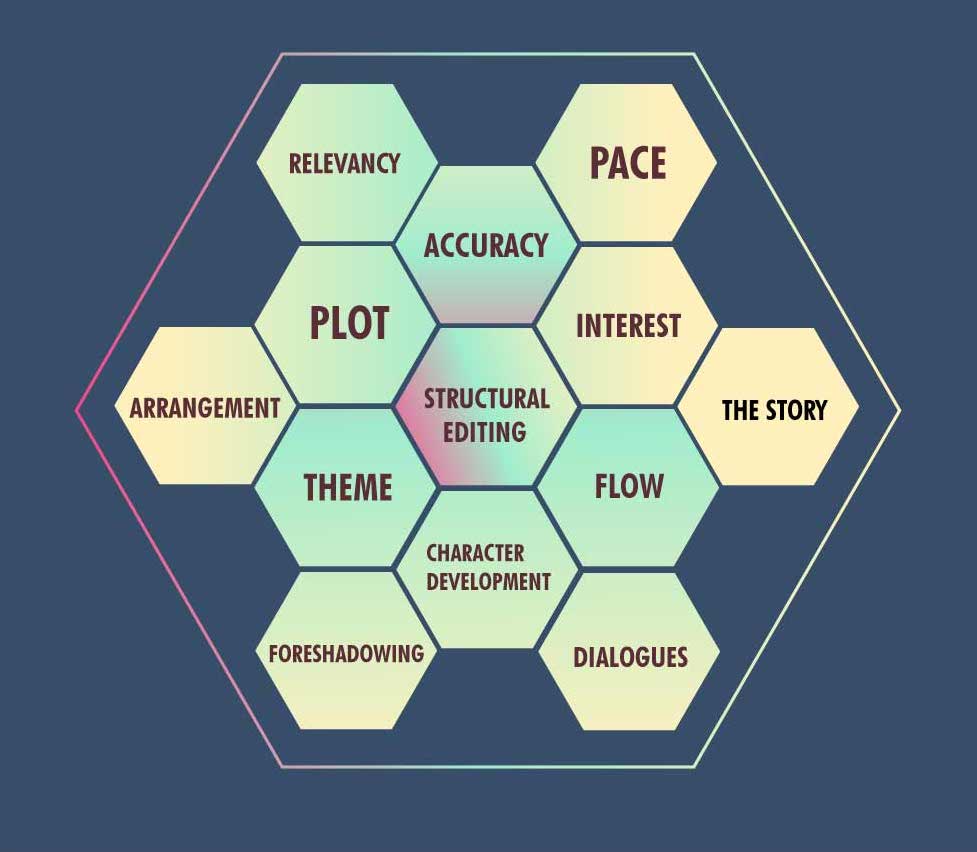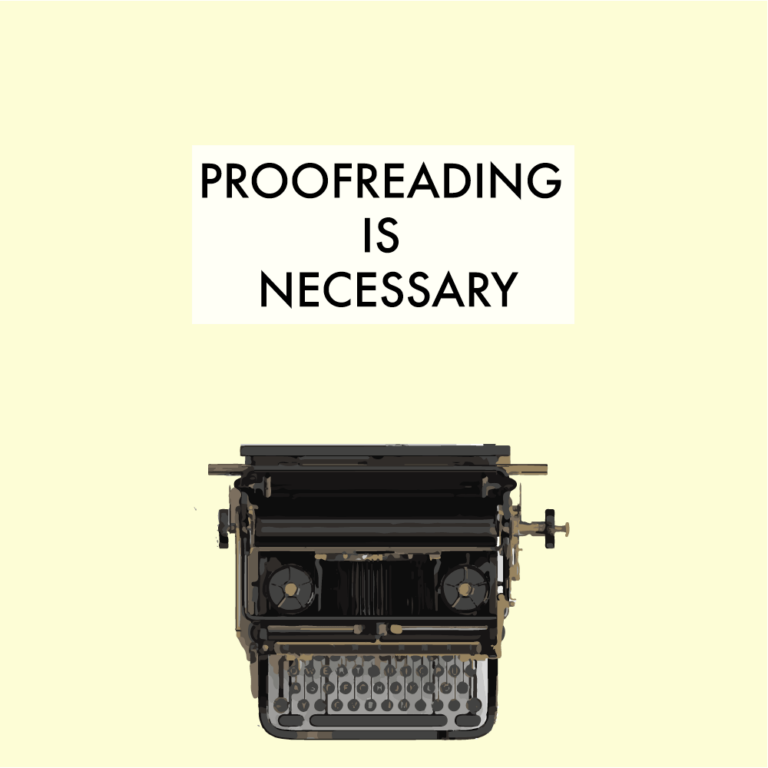Completing a written piece is just half work done. If you are writing something other than you’re diary, editing is needed to complete your work. An unedited document is like a half-baked cake with no icing. It is still a cake, but not a good one. What most people are not aware of is that there are many types of editing, depending on the nature of the written word. This article will focus on one type of editing; structural editing. I will also touch on different types of editing very briefly, like these:
- What is structural editing
- The difference between structural, substantial and developmental editing
- What elements do structural editing focuses on
- How to do better structural editing
- The other types of editing
- An editor’s point of view in structural editing
- Additive and reductive structural editing
- Editing a fiction and non-fiction piece
What is structural editing
General editing means sifting through the draft and tweaking words here and there to make the written work better. The purpose of editing defines different types of editing. For example, if the editing is done to remove the grammatical errors, it’s called copyediting. Similarly, if the editing is done to polish the entire structure of the written piece, it’s called structural editing.

Structural editing focuses on the entire outline of the story. It is used mostly for fictional work and content editing is done for non-fictional works. Structural editing is crucial because, without it, the story would be non-cohesive, uninteresting, and a big mess.
Writing fiction is a tough task. Even short pieces of fiction tend to have lots of errors in it since it is fiction; you are creating it from your memories and thoughts. The human mind finds it very difficult to see the bigger picture.
Writers, even professional ones, are inadvertently bound to make some errors with the structure of the story they write. This is what structural editing takes care of. In summary, structural editing edits the foundations, the skeletal and the cosmetic parts of the story.
Elements structural editing focuses on
To ensure that the structure of the fictional work flows better and is error-free, editing on some elements of the fictional piece is essential. Here’s a list of the elements to edit and why you should edit them.
- The plot – The core of the story is the plot. This is what drives the readers to continue reading and if there is any inconsistency, it’s going to pull the readers off. You cannot start the story with one established goal and then change it completely to another in the end. A fitting example would the plot of the TV series A Game of Thrones which spiraled down the path of inconsistencies. It started with the plot majorly focusing on Jon Snow and then by the end, forgot what the driving plot was. The result was people hating the show.
- Theme – Theme is not the plot of the written work, but the essence of the plot. Consistency of the theme is important because the theme of the story was the reason why the reader got interested. While minor changes in the theme of the story are great, a complete shift is a problem. Structural editing ensures that the changing scenes and characters do not change the overall theme of the story. Using A Game of Thrones as an example, the story started with a theme of politics, backstabbing, emotions, family, and then devolved into a show of CGI and action.
- Character development – There’s nothing better in a story than a well-developed character arc. A character arc is when a character slowly and steadily changes with the events of the plot. This stretch of change is what makes a character interesting. Many times writers forget how they started their characters and either bring a sudden, non-sensible change, or either no change at all. This is what structural editing does. It ensures that the changes in the characters are gradual, intended, consistent, and sensible. The example from A Game of Thrones would be the character arcs of Daenerys Targaryen and Jamie Lannister. Daenerys’ character arc was rushed and made just to fit the plot. Jamie’s character arc was completely non-sensible. Daenerys was supposed to go insane, but not just by looking at the tolling bell. There was hardly any foreshadowing. Jamie was a man who gave up his honor to save the people of King’s Landing, but in the end, he just said: “I never cared about those people anyway”
- Flow- Flow is a different element from pace. Pace will be discussed later. Flow is how the characters are talking if the plot is moving ahead smoothly or not. Are there too many fillers? Are there any parts that are unnecessary and can be removed? Will removing a particular character or even a chapter affect the overall story? If not, then the element is not required and hinders the flow. Hence, structural editing includes flow to ensure a better overall story.
- Pace – Similar to flow, but it differs from it as it targets the events and not the characters. The pace of a story means how fast is the main character moving towards its goals? How quickly are the events occurring? A fast-paced story is interesting to read at, but it is challenging to write since the writer has to stuff a lot of details in a compact space. A slow-paced story is often enjoyable, but remember, there is no such thing as a slow-paced story. A slow-paced story is a story with multiple, fast-paced sub-stories. The goal of structural editing the pace is to ensure the story stays at the intended pace, not too sluggish or too fast. A linear paced story is enjoyable to read.
- Accuracy – This mostly applies to non-fiction, but also fiction up to a certain extent. Accuracy in non-fiction is important because that is the basis of your work. Structural editing (a form of it, discussed later) ensures that whatever data that has been shown or points made are accurate. Even in non-fiction, if a writer writes a fictional story about World War 1, he/she cannot mention AWM sniper rifles being used, because it is inaccurate. This is of course an exaggeration, but subtle details are often missed and mistaken and accuracy is required in writing both fiction and non-fiction.
- Interest – Interest of the readers is very fickle and one error can make them lose interest in your work. Structural editing aims to keep the content interesting and the readers hooked. This is done by eliminating redundant content, shortening unnecessarily long sentences, making every chapter/section satisfying, and not spilling all the beans. Spilling all the beans here means always keeping something under the cover, in every section of the story to keep the readers curious.
- Dialogues – Dialogues reveal the characters and the intricacies of the plot. They could be expository or subtle. What structural editing entails is to ensure that the dialogues fit well into the story. The editing is done to check whether the dialogues are moving the story ahead, conveying something important, and sound natural or not. It also checks whether the character would talk like that or not. Is there enough depth in what they are saying? All of this is checked in structural editing.
- Relevancy – This is again a part of structural editing’s derivative which will be discussed later. Relevancy means if your literary work will work with the targeted readers or not. This is often done before writing the book. The writer looks at the popular content that the targeted readers enjoy and then crafts his piece accordingly. Relevancy is important both for commercial and critical success.
- Arrangement – Also called order, structural editing looks at how the story has been arranged. How the subplots have been presented to the readers and if there is a better way to present it to make it more interesting. Order can make or break your novel. An arrangement that is too complex for the targeted readers fails the book. Conversely, too simple arrangement for mature readers results in the same failure. A classic example of order is movie Passengers. The story could have been much better if the audience wouldn’t have known anything about Chris Pratt.
- Foreshadowing – This part checks if there is too little or too much foreshadowing. Foreshadowing is necessary to make the story work. Too much foreshadowing and the readers can see through the book, killing the suspense and interest. Too little and things won’t make much sense. Foreshadowing is one of the most important components of a suspense/thriller story and it is very difficult to perfect. Hence it is a part of structural editing. A great example of brilliant foreshadowing is Prisoners and Predestination.

The fine tunings
There are some fine tunings too in structural editing that polish the story, even more, making it even better. It’s called fine-tuning because it is more tuning than editing. This requires the author’s cap to see the bigger picture, the overall story.
- Is there a way to make the story better?
After the major editing work is done, you’ve to ask yourself; “Is there a way you can make the story better?” Take all the possible ways to change the story accordingly. When you are truly exhausted and cannot find a way to make the story better, that’s when you stop thinking about it and you’ve reached the final draft.
- Does the climax work?
The climax is the reason the readers go through that long book or story of yours. Make it worth their time and effort. The climax should be satisfying, tying all loose ends, bringing everything together. No matter what ending you give your story, everything previously in the story must make sense, all the efforts shown by the characters must be worth it.
- Additive or reductive structural editing
Sometimes, the long draft needs a lot of reduction and sometimes the short draft needs a lot of addition. Editors have to remove some characters, events, dialogues, and sometimes even entire sub-plots if they negatively affect the story. If any part of the story, even subplot, is not fitting well, it is better to remove it.
Similarly, if your text is lacking, the editor has to rearrange the entire plot, add new subplots to give your story some thickness. Both additive and reductive structural editings are time and effort consuming. The entire plot is changed sometimes just to fit or remove some subplots.
Structural editing exercises to be better at it.
If you are a writer of any sort, you have to be an editor. Of course you can hire an editor who can do the job for you, but the editor does not share the author’s vision. So you must be an editor, even to examine the work of another editor. To be better at structural editing, here are some things you can do and practice:
- Read books on writing better. If you know how to write better, you’ll know what to edit. Learn from professionals like Stephen King, Neil Gaiman, etc by taking their advice.
- Edit your work 2-3 days after finishing the first draft. Writing a draft, even if it is a vomit draft is mentally taxing. Getting to edit mode right after completing the draft will give erroneous results. To get better results, let the draft sit for 2-3 days and then get to editing with a refreshed mind.
- Read your book as if it was written for someone else – instead of thinking that it’s your work, think that someone else has asked you to edit their work. Review their book with all your knowledge and learn from it. This removes personal bias. Finding too many errors will make you feel incompetent, affecting the editing process.
- Imagine the story as a movie – Think that your story has been turned into a motion picture. If you watch the movie, would it be satisfying? Would you enjoy the scenes are visualizing them? This is great for editing the entire plot of the story. This is similar to using the Prisoner’s constraint to write better.
- Read what your competition is writing. To know what is working best amongst the targeted readers, you need to learn about your competition. Read their work, and here’s the important advice, not as your competitor, but as your inspiration. The moment you consider their work as “competitor’s work”, you’ll get defensive. It stops you from taking the good things from it.
- Make a to-do list of all things that need to be fixed about the book. Don’t do the “find the error, fix the error” routine. You have to see the bigger picture, not in chunks. Make a list of all the errors (structural) and then decide the corrections that all work well together.
- Does the language sound apt for the targeted readers? If your targeted audience is 16-18-year-olds, you cannot write like Charles Dickens. You have to write in simple and easy to digest language.
Structural, substantial, and developmental editing, what’s the difference?

You just read about what structural editing is. In a nutshell, it is about seeing a bigger picture and the overall story. But what about substantial and developmental editing? Many times, I have seen people use these three terms interchangeably. While they are very closely related, there are some subtle differences.
Substantial editing is a form of structural editing wherein the editor works very closely with the writer. Instead of pointing out the required changes, the editor rewrites paragraphs, removes some characters, adds other elements in a way he/she deems to be fit. Since a substantive amount of editing is done, it is termed accordingly.
Developmental editing is structural editing before writing even starts. This is done mostly for the educational book, but it is recommended for every author before writing the draft. Developmental editing looks at the market, what the readers want, what kind of book is selling better, etc. This editing is more like conceptual editing.
Types of editing
There are many types of editing, apart from the three closely related ones discussed above. What are these editing and how are they different is presented below? Since it is not the core subject of this article, I have kept their description brief. But that is enough to give you an idea about them. There is nothing more about structural editing beyond this point.
- Excessive editing – This is the practice of “too much editing” where the writer edits each paragraph as it is written. Excessive editing is considered as a disease since it kills the productivity and the quality of the draft. One reason for excessive editing is trying to make everything perfect, which cannot be done. The written work will emerge in form, you cannot force it to be perfect. Edit only what’s needed.
- Line editing – Line editing, as the name suggests, is editing a draft, line by line. This editing looks at how each sentence looks, the composition of the prose, unit by unit. The aim of this editing is to make the story sound good and impactful. Line editing is also called stylistic editing.
- Script editing – Script editing is just editing, but instead of a draft, it is the editing of the screenplay. It’s a little bit different from a manuscript or draft editing since scripts are dominantly dialogues.
- Essential editing – This is the editing of the parts of a draft that must go. while stylistic or structural editing is done according to the vision of the editor or the writer, essential editing is removing the elements that tamper with the quality of the draft. This includes grammatical errors, unnecessary lines, and plot devices.
- Copy editing – Copy editing means editing grammatical errors like spelling mistakes, repetition of sentences, etc. This is different from copywriting which will be discussed later.
- Content editing – Content editing is very similar to structural editing, but instead of editing the story of a fictional work, content editing is for non-fictional works. This usually includes fact-checking, accuracy of the data, sources, etc.
- Proofreading – This is the final reading of the edited manuscript. Once all the editing is completed, a final read is given to ensure that everything was done properly, i.e., there was no error in the error-checking. It also includes ensuring the sources are correct, everything fits well, etc.
Copyediting vs copywriting
Copyediting is the removal of grammatical errors in the drafts like spelling mistakes, copywriting is an entirely different thing. Copywriting is the practice of writing short sentences or catchphrases used for marketing, promotions, etc. This is used by companies to connect their products to the buyers. Apple used “Think different”, Adidas has “Impossible is nothing”, Nike’s popular “Just do it”, Coca-Cola has “Open happiness”, etc. These catchphrases came from copywriting.







